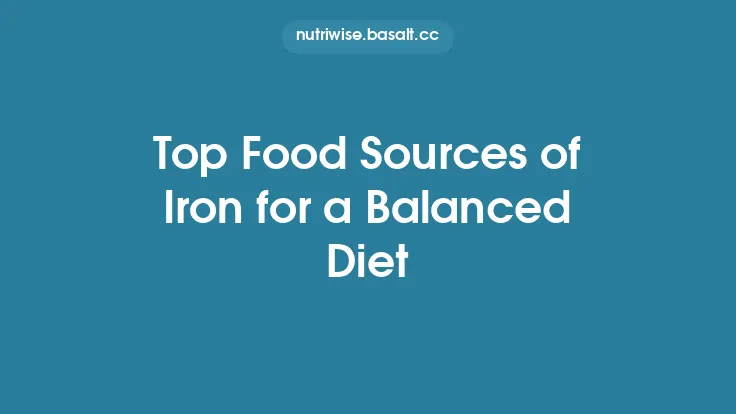The oceans are a remarkable source of nutrition, offering lean protein, essential omega‑3 fatty acids, vitamins, and minerals that support heart health, brain function, and overall well‑being. Yet, as demand for seafood grows, the pressure on marine ecosystems intensifies. Choosing fish that are abundant, harvested responsibly, and have a low ecological footprint is one of the most effective ways consumers can protect ocean health while still enjoying the culinary and nutritional benefits of the sea.
Below is a curated list of ten fish species that consistently rank high on sustainability assessments worldwide. Each entry explains why the species is considered ocean‑friendly, highlights its key nutritional attributes, points out the primary regions where it is caught, and offers practical tips for sourcing and enjoying it responsibly.
1. Pacific Sardine (Sardinops sagax)
Why it’s sustainable
Pacific sardines reproduce quickly, have short lifespans, and form massive schools that can support large catches without depleting the stock. Their populations are monitored closely in the North Pacific, and current harvest levels remain well within scientifically determined limits.
Nutritional highlights
- Protein: ~20 g per 100 g serving
- Omega‑3s: 1.5 g EPA/DHA combined
- Vitamins & minerals: Rich in vitamin B12, selenium, and calcium (especially when the bones are eaten)
Where it’s caught
Main fisheries operate off the coasts of California, British Columbia, and the Pacific Northwest of the United States, as well as in Japanese waters.
Sourcing tips
Look for fresh sardines sold whole or filleted at reputable fish markets, or opt for canned sardines that list “wild‑caught Pacific” on the label. Because sardines are low‑on the food chain, they accumulate fewer contaminants than larger predatory fish.
Culinary note
Grilling, pan‑frying, or adding them to salads and pasta dishes preserves their delicate flavor and texture while delivering a nutrient‑dense boost.
2. Alaskan Pollock (Theragra chalcogramma)
Why it’s sustainable
Alaskan pollock is managed under one of the world’s most rigorous fisheries management systems, with strict catch quotas, real‑time monitoring, and a precautionary approach that has kept the stock healthy for decades.
Nutritional highlights
- Protein: 19 g per 100 g
- Omega‑3s: 0.7 g EPA/DHA
- Low fat: Less than 1 g total fat per serving
- Micronutrients: Good source of vitamin B6 and phosphorus
Where it’s caught
The Bering Sea and the Gulf of Alaska are the primary harvesting grounds, with most pollock landing in the United States and exported globally.
Sourcing tips
Frozen fillets and breaded products (e.g., fish sticks) that specify “Alaskan wild‑caught” are reliable choices. Avoid products that blend pollock with other, less‑documented species.
Culinary note
Its mild flavor makes pollock ideal for a variety of preparations, from simple sautéed fillets to incorporation into soups and stews.
3. Atlantic Mackerel (Scomber scombrus)
Why it’s sustainable
Mackerel populations in the North Atlantic are robust, thanks to high reproductive rates and effective regional management. The species is also less prone to overfishing because it is harvested primarily as a by‑product of other fisheries, reducing targeted pressure.
Nutritional highlights
- Protein: 18 g per 100 g
- Omega‑3s: 2.5 g EPA/DHA (one of the highest among commonly eaten fish)
- Vitamins: Very high in vitamin D and B12
- Minerals: Excellent source of selenium and potassium
Where it’s caught
Key fisheries operate off the coasts of Norway, Iceland, the United Kingdom, and the eastern United States (particularly New England).
Sourcing tips
Fresh mackerel is often sold whole; look for firm flesh and bright eyes. Smoked or canned mackerel labeled “wild‑caught Atlantic” also provides a convenient, shelf‑stable option.
Culinary note
Because of its rich, oily flesh, mackerel shines when grilled, broiled, or lightly pan‑seared, and it pairs well with acidic accompaniments like lemon or vinegar‑based sauces.
4. Pacific Herring (Clupea pallasii)
Why it’s sustainable
Herring form massive schools and have a short life cycle, allowing their populations to rebound quickly after harvest. The Pacific herring fishery is subject to strict seasonal closures and catch limits that protect spawning aggregations.
Nutritional highlights
- Protein: 21 g per 100 g
- Omega‑3s: 1.2 g EPA/DHA
- Vitamins & minerals: High in vitamin B12, vitamin D, and iodine
Where it’s caught
Major harvests occur along the Pacific coasts of Canada (British Columbia) and the United States (Washington, Oregon, and Alaska).
Sourcing tips
Fresh herring is often sold whole; look for clear eyes and a fresh, briny scent. Canned herring labeled “Pacific wild‑caught” offers a convenient alternative.
Culinary note
Pickling, smoking, or lightly frying herring preserves its distinctive flavor and makes it a versatile addition to salads, spreads, or as a protein‑rich snack.
5. Black Sea Bass (Centropristis striata)
Why it’s sustainable
Black sea bass is managed under a well‑structured fishery in the western Atlantic, with annual stock assessments, limited entry permits, and gear restrictions that minimize habitat impact. The species’ moderate growth rate and broad distribution support sustainable harvest levels.
Nutritional highlights
- Protein: 20 g per 100 g
- Omega‑3s: 0.9 g EPA/DHA
- Vitamins & minerals: Good source of vitamin B6, niacin, and selenium
Where it’s caught
Primarily harvested off the Mid‑Atlantic and New England coasts of the United States, especially in the Chesapeake Bay and the Gulf of Maine.
Sourcing tips
Look for fresh fillets with a firm texture and a mild, sweet aroma. When buying frozen, ensure the packaging indicates “U.S. Atlantic wild‑caught” to avoid farmed or imported alternatives.
Culinary note
Its firm, white flesh holds up well to grilling, baking, or pan‑searing, and it pairs nicely with herb‑based sauces or citrus glazes.
6. Yellowfin Sole (Solea senegalensis)
Why it’s sustainable
Yellowfin sole inhabits the cold, nutrient‑rich waters of the North Pacific, where it is caught using selective bottom‑trawl methods that limit bycatch of non‑target species. The stock is considered healthy, with harvest levels set well below maximum sustainable yield.
Nutritional highlights
- Protein: 19 g per 100 g
- Omega‑3s: 0.5 g EPA/DHA (moderate)
- Low fat: Less than 2 g total fat per serving
- Micronutrients: Provides vitamin B12, phosphorus, and magnesium
Where it’s caught
Key fisheries operate off the coasts of Alaska, British Columbia, and Washington State.
Sourcing tips
Fresh fillets should be translucent and slightly glossy. Frozen fillets labeled “Alaskan wild‑caught yellowfin sole” are widely available and retain quality when properly thawed.
Culinary note
Its delicate flavor makes it ideal for light preparations such as steaming, poaching, or gentle pan‑frying with butter and herbs.
7. Atlantic Mullet (Mugil cephalus)
Why it’s sustainable
Mullet are highly resilient, thriving in a range of coastal habitats from estuaries to open bays. Their rapid growth and high fecundity keep populations stable even under moderate fishing pressure. In many regions, mullet are harvested as a by‑product of other fisheries, reducing targeted exploitation.
Nutritional highlights
- Protein: 18 g per 100 g
- Omega‑3s: 0.8 g EPA/DHA
- Vitamins & minerals: Rich in vitamin B12, iron, and zinc
Where it’s caught
Commonly fished along the Atlantic coasts of Europe (Portugal, Spain, France) and the eastern United States (Mid‑Atlantic).
Sourcing tips
Fresh mullet is sold whole; look for clear eyes and firm flesh. Smoked mullet, a traditional preparation in Mediterranean markets, is also a sustainable option when labeled “wild‑caught Atlantic.”
Culinary note
Mullet’s firm, slightly sweet flesh is excellent for grilling, baking, or incorporating into Mediterranean‑style salads with olives and tomatoes.
8. Red Snapper (Lutjanus campechanus) – Managed Populations
Why it’s sustainable (when sourced from well‑managed Gulf of Mexico stocks)
Red snapper was once overfished, but stringent management measures—including limited entry permits, seasonal closures, and gear restrictions—have allowed the Gulf of Mexico population to rebound. Selecting snapper from certified, well‑monitored fisheries ensures you are supporting a recovering stock.
Nutritional highlights
- Protein: 20 g per 100 g
- Omega‑3s: 0.7 g EPA/DHA
- Vitamins & minerals: High in vitamin B12, niacin, and selenium
Where it’s caught
Primarily harvested in the Gulf of Mexico, especially off the coasts of Texas, Louisiana, and Alabama.
Sourcing tips
Choose fresh fillets that are firm and have a mild, clean scent. When buying frozen, verify that the packaging specifies “Gulf of Mexico wild‑caught” and includes a harvest date.
Culinary note
Red snapper’s firm, slightly sweet flesh is versatile—great for grilling, baking, or making fish tacos with fresh salsa.
9. Pacific Halibut (Hippoglossus stenolepis)
Why it’s sustainable
Pacific halibut is managed under a quota‑based system that incorporates scientific stock assessments, bycatch mitigation, and seasonal closures. The species’ long lifespan and slow growth are offset by conservative catch limits that keep harvest well below sustainable thresholds.
Nutritional highlights
- Protein: 22 g per 100 g
- Omega‑3s: 0.9 g EPA/DHA
- Low fat: Approximately 2 g total fat per serving
- Micronutrients: Excellent source of vitamin B12, phosphorus, and potassium
Where it’s caught
Main fisheries operate in the Bering Sea, the Gulf of Alaska, and the Pacific coast of Canada (British Columbia).
Sourcing tips
Fresh halibut steaks should be thick, white, and slightly translucent. Frozen fillets labeled “Alaskan wild‑caught Pacific halibut” retain quality when thawed slowly in the refrigerator.
Culinary note
Its thick, meaty texture makes halibut ideal for grilling, broiling, or pan‑searing with a simple herb butter.
10. Arctic Char (Salvelinus alpinus) – Wild‑Caught
Why it’s sustainable
Wild Arctic char populations in the cold, pristine waters of the Arctic and sub‑Arctic remain abundant. The species is harvested using low‑impact gear such as hook‑and‑line or small‑scale nets, which minimizes habitat disturbance and bycatch.
Nutritional highlights
- Protein: 20 g per 100 g
- Omega‑3s: 1.2 g EPA/DHA (higher than many other white fish)
- Vitamins & minerals: Rich in vitamin D, B12, and selenium
Where it’s caught
Key locations include the coastal waters of Alaska, northern Canada, and parts of Scandinavia (Norway, Iceland).
Sourcing tips
Fresh fillets should be firm, with a deep pink to orange hue. When purchasing frozen, look for “wild‑caught Arctic” and avoid products that blend char with farmed salmon.
Culinary note
Its flavor sits between salmon and trout, making it suitable for grilling, baking, or serving raw as sashimi when sourced from reputable suppliers.
Putting It All Together: A Practical Guide to Sustainable Seafood Shopping
- Prioritize Transparency – Choose vendors that provide clear information about the fish’s origin, fishing method, and whether it is wild‑caught.
- Seasonality Matters – Even ocean‑friendly species have peak seasons when they are most abundant. Buying them during these windows supports healthy stock cycles.
- Diversify Your Plate – Rotating among several of the species listed above reduces pressure on any single population and introduces a broader range of nutrients.
- Mind the Source – While many of these fish are harvested in the United States, Canada, and northern Europe, reputable imports from similarly well‑managed fisheries are also acceptable.
- Store Properly – Keep fresh fish on ice or in the coldest part of the refrigerator and consume within two days. Frozen fish should be stored at 0 °F (‑18 °C) and used within the recommended timeframe on the package.
By integrating these ten ocean‑friendly fish into your regular diet, you can enjoy the health benefits of seafood while actively contributing to the preservation of marine ecosystems. Each bite becomes a small but meaningful vote for a resilient, thriving ocean—today and for generations to come.





